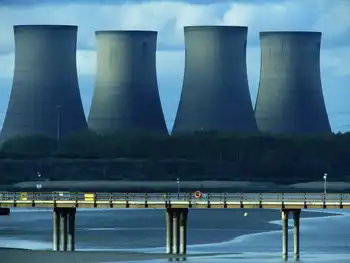R.L.Hearn Station deserves preservation
By Christopher Hume, Toronto Star
Substation Relay Protection Training
Our customized live online or in‑person group training can be delivered to your staff at your location.

- Live Online
- 12 hours Instructor-led
- Group Training Available
Now it sits empty, and although not entirely abandoned, threatened with destruction, the frequent fate for landmarks in this city.
When construction of the Hearn began in the late 1940s, the idea was to provide power to a fast-growing region. Its location close to the shipping channel was chosen for ease of unloading the huge quantities of coal that powered the giant turbines. It opened in 1951, was expanded and changed to natural gas. During its heyday in the early Â’60s, no fewer than 600 people worked at the station. But even before it was finished, the Hearn faced difficulties nuclear power offered a cleaner alternative.
By the time it shut down, in 1983, the Hearn was more a symbol of our dirty past than the clean future. The question of what to do with the building has loomed ever since, still unresolved. In 2002, the Mike Harris government signed a 20-year lease with Studios of America, which planned to turn it into an enormous film studio. The advent of the nearby Film Port facility ended that, and except for occasional movie shoots — most recently, “Red” — it has served no purpose.
Various schemes have been proposed, including a multi-rink hockey/skating complex. So far, nothing has materialized, which is why the tenants have applied for a permit to tear the place down. No replacement plan exists. Who knows, it could well end up a big-box desert.
There are better options Toronto has Evergreen at the Brickworks, the Power Plant gallery, the Wychwood Barns, the Distillery District, old industrial sites transformed beautifully into civic assets, fully reintegrated into the city.
In the UK, the decommissioned Bankside power station was famously remade as the Tate Modern, now the most visited art gallery in London. Much of the old equipment can still be seen. But Hearn is three times the size, 23 million cubic feet.
Today, the station feels more geological than architectural it has open spaces, outlooks, frozen ponds and even its own indoor cliffs. The most obvious feature is its size the main hall, which once housed eight large turbines. It stretches 300 metres. The equipment long gone, the interior is a Piranesian maze of columns and beams. Most amazing of all, the building rests on top of an immense concrete slab four metres thick. It sits on hundreds of columns that descend 50 metres in the landfill before they hit bedrock.
Then there's the smokestack 215 metres in height, it was the tallest structure in Toronto until the CN Tower opened in 1976.
To tear down such an extraordinary, even heroic, structure makes no sense. Demolition would be shortsighted to the point of self-destructiveness. Granted, the process won't be easy its size alone will make rehabilitation a daunting task.
But the possibilities are endless. And keeping in mind that the Port Lands will one day become a waterfront precinct with parks, promenades and housing for 40,000, the need to rethink the Hearn is vital. It could be the element around which a future neighbourhood takes shape. Or it could be destroyed, and replaced by something utterly banal. Already the new Port Lands Energy Centre next door has blighted the area.











